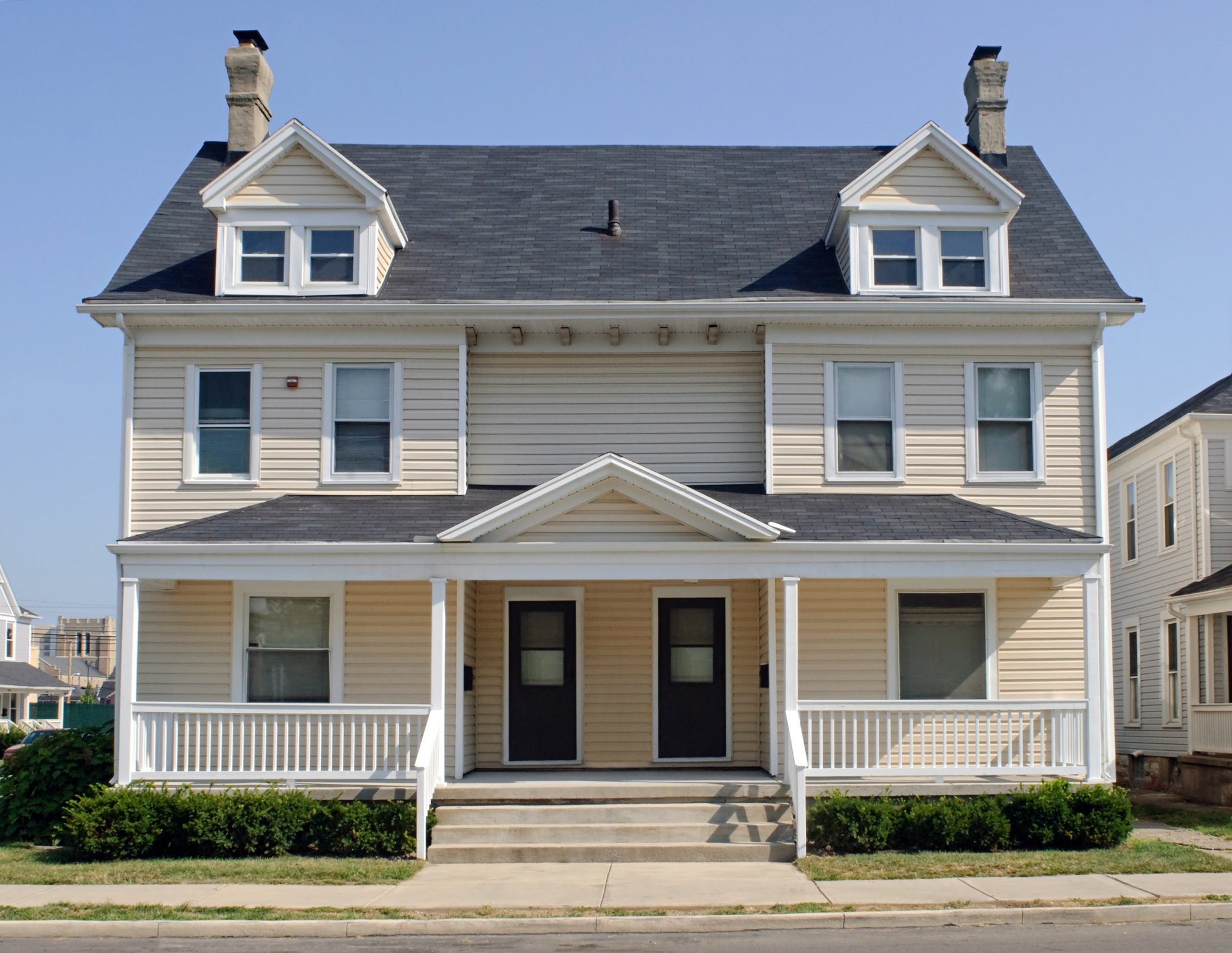#9023. Symmetrical Duplex with Neo-Colonial Facade
The image showcases a typical American duplex (two-family house) in a neo-colonial style. The building is a two-story symmetrical structure with a mansard roof and characteristic dormer windows with gables at the upper level. The facade is clad in light-colored horizontal siding, which is a common material in American residential architecture.
The symmetry of the facade is emphasized by two identical entrance doors located in the center of the building under a small triangular pediment of the porch. On both sides of the entrances are identical verandas with white wooden railings and columns supporting the canopy. Window openings are rhythmically arranged across the facade, creating a harmonious composition – four windows on each of the main floors and two dormer windows in the attic.
The color scheme of the facade is restrained – beige siding contrasts with white trim around windows, cornices, and porch railings. The dark gray roof shingles complete the composition, creating a classic American appearance. Architectural details such as gables, decorative cornices, and symmetrical chimneys on the roof give the building a traditional character.
When designing your own home facade, you might consider the following techniques: using symmetry as an organizing principle, contrasting the main cladding material with decorative elements, paying attention to the proportions of window openings, and applying classic architectural details (gables, cornices) to give the building stylistic identity. It's also important to consider that a veranda or porch serves not only as a functional element but also as an important connecting link between the house and the surrounding landscape.
